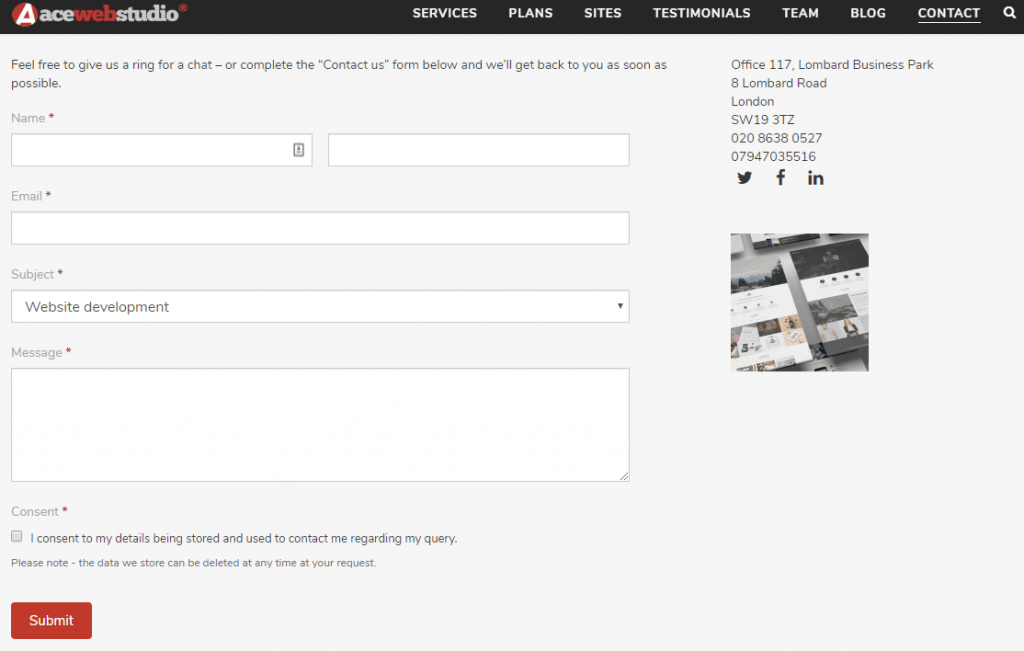16 Apr 4 Communication Channels to Add to Your Website
In the last decade or so, we have transitioned from doing business in brick-and-mortar shops to online platforms. The likes of Amazon and eBay have provided many eCommerce entrepreneurs with a way to conveniently sell their products.
Savvy business owners online are going beyond their Amazon Seller accounts by having their own business websites.
And having one definitely has its advantages.
Why you should have a business website?
A business website is a medium by which people can discover your brand. You may think of it as a virtual store stocked with your products or containing information about the services that your company offers.
Normally on the large eCommerce platforms, you have millions of sellers listing their goods and services. Depending on the niche you’re in, it can be tough to break into all that competition.
You’ll also be required to pay a premium just to be able to post and sell on these websites. Seller’s fees can’t get costly especially if you add in storage and fulfillment fees.
That being said, having your own business website is a cost-effective option, especially when you’re relatively new to selling online, and would rather not deal directly with big and better-known competitors.
If you aren’t tech-savvy, services like Shopify and BigCommerce make it easy to set up your own website.
Must-have communication channels on your website
Of course, your website needs to contain all the information people would need to buy your brand or sign up for a service of too. But there’s another crucial element in your website that needs to be considered.
Communication channels
You may virtually have every product’s colour, size, and dimensions on your website, with price and shipping information added. But you should expect that site visitors will come at you with questions.
You’ll want to cater to this lot of curious Johns (and Janes) as much as you can. So you’ll need to think of a variety of ways for them to reach out to you with their queries. There are a few communication channels that you can use.
Here’s an in-depth look at three of the most common communication channels.
1. Contact Us Page
This is a page where people browsing through your website can go to post their inquiries. It normally contains a form that a site visitor can fill out and send. In other cases, it will have the company’s mailing address and telephone number for those who want to call in or send something by mail.
Most website themes already come with a template version of the Contact Us Page. However, you wouldn’t want to necessarily stick to those. It’s a given that this page should be clean and easy-to-navigate, but that doesn’t mean you can’t play around with how it looks.
Think about your branding strategy. Use your brand colours on the page and add in text that echoes your company’s voice. For example, if you sell bespoke jumpers on your website, you’d want the messaging on the contact page to be friendly and casual.
Incorporating little details that enhance user experience on your website is also helpful. So, set up your contact form to alert someone when his query has already been sent.
Another great thing about the contact form is it can be used for building your email list. Services like Kajabi, MailChimp, and Klaviyo allow you to create contact forms that appear on your website and collate all the recipients in a large pile of potential customers.
You can then create segments from this pile and send out targeted emails to boost interest in your brand and products.
2. Social Media Buttons
This second communication channel inspires conversations on social media that could then be redirected back to your business website.
Having a business page or profile on the top social media platforms out there (e.g. Facebook, Twitter, Instagram, YouTube) is another excellent way to get your products and services out there.
Once you have these pages up and running, you’ll want to add the corresponding social media buttons to your business website’s main pages.
Now, a company blog is definitely another tool you can add to your online marketing arsenal. By filling it with fresh, high-quality and useful content (with a few well-placed keywords), a blog can be a great way to boost your website’s presence on search engines. Also, blog articles, especially really cool ones that come with infographics or videos, are quite shareable on social media.
If you already have a blog, make sure to add a feature on there that allows your readers to share an article on their social media profile pages.
3. Chat Support
Supplementing your Contact Us page with live chat support lets you cater to more queries.
Here’s a list of live chat plugins for you to choose from.
- Drift
- Tawk.to
- WordPress Live Chat
- Zendesk
And some specific advantages of having a live chat plugin installed on your website.
- Convenient for customers – live chat connects customers with a customer support agent so questions can be answered quickly
- Saves you money – it’s not as costly as setting up an email or phone service to cater to customer support queries
- Provides you with a competitive advantage – chances are your competition isn’t even offering this on their website
- Time-saving – it cuts response time
4. Virtual Meetings
If you own and run a service-based enterprise, the ability to conduct virtual meetings with potential clients will definitely provide you with an edge.
Virtual meetings allow you to pitch proposals and answer questions with ease, even when your company headquarters is on the other end of the UK or a different part of the world.
Look into the virtual meeting software options listed below and select the ones that best fit your needs and budget.
Conclusion
Depending on your business, it won’t be necessary to employ all of these communication channels. What’s more important is you study your potential customer base and look into which ones will work best and give your brand a boost.
BOOK A CONSULTATION


